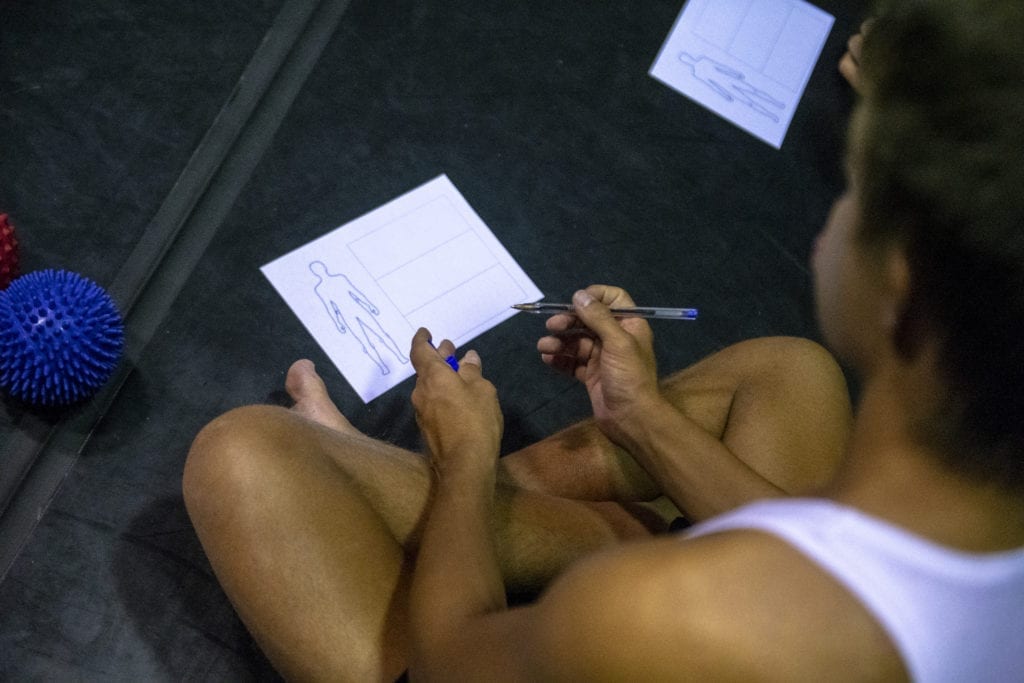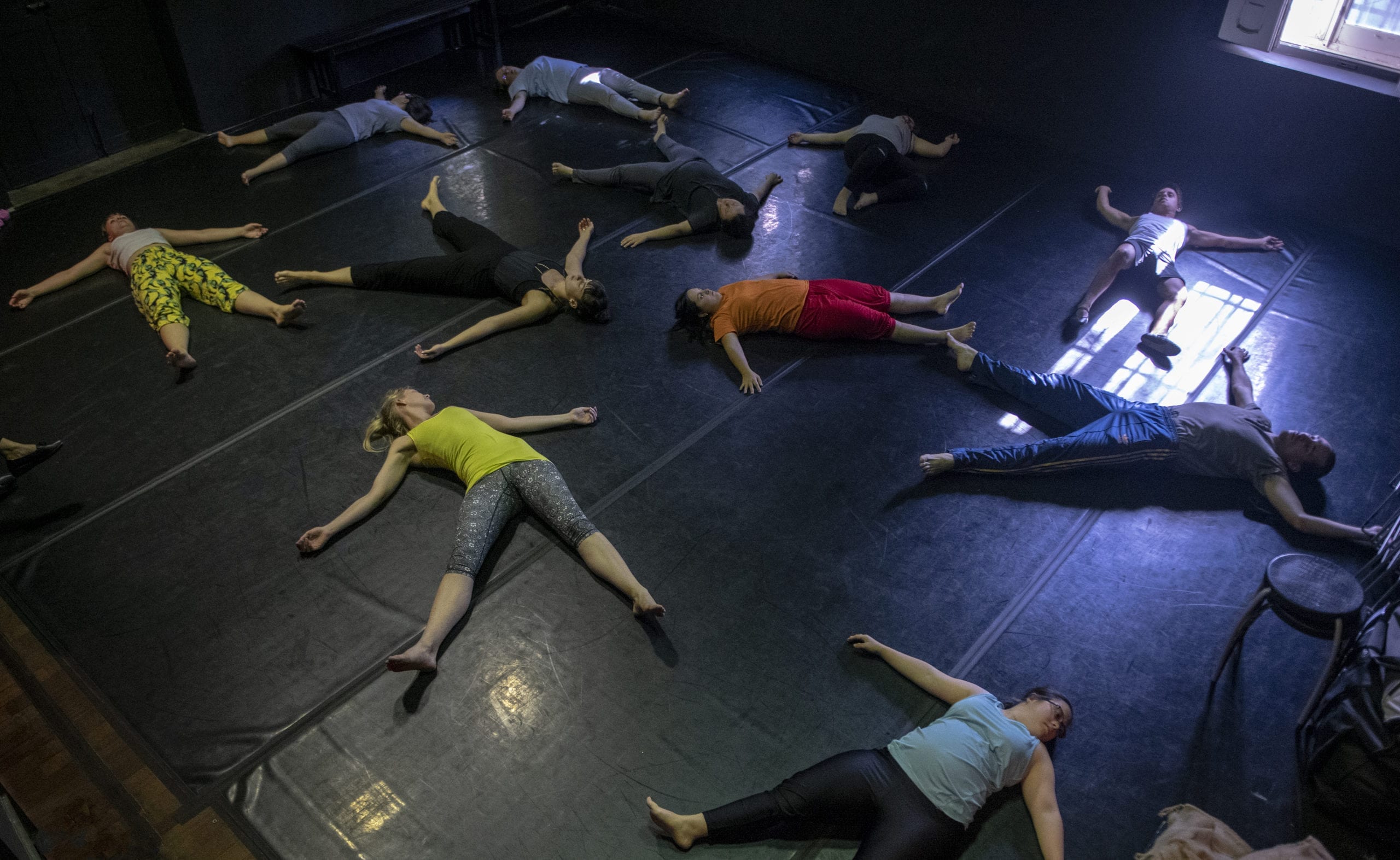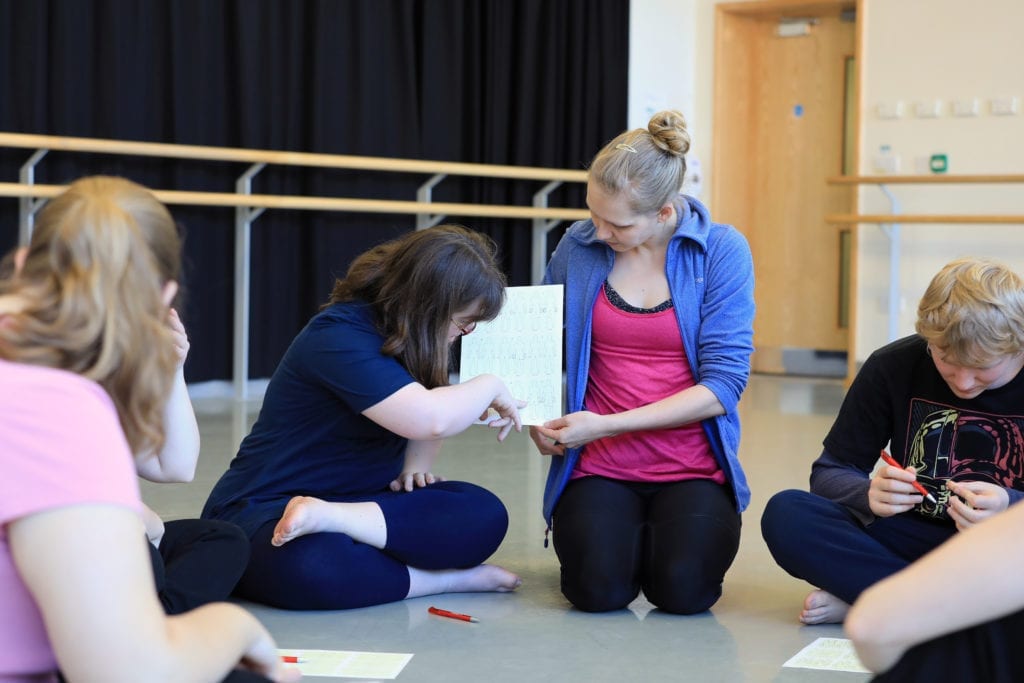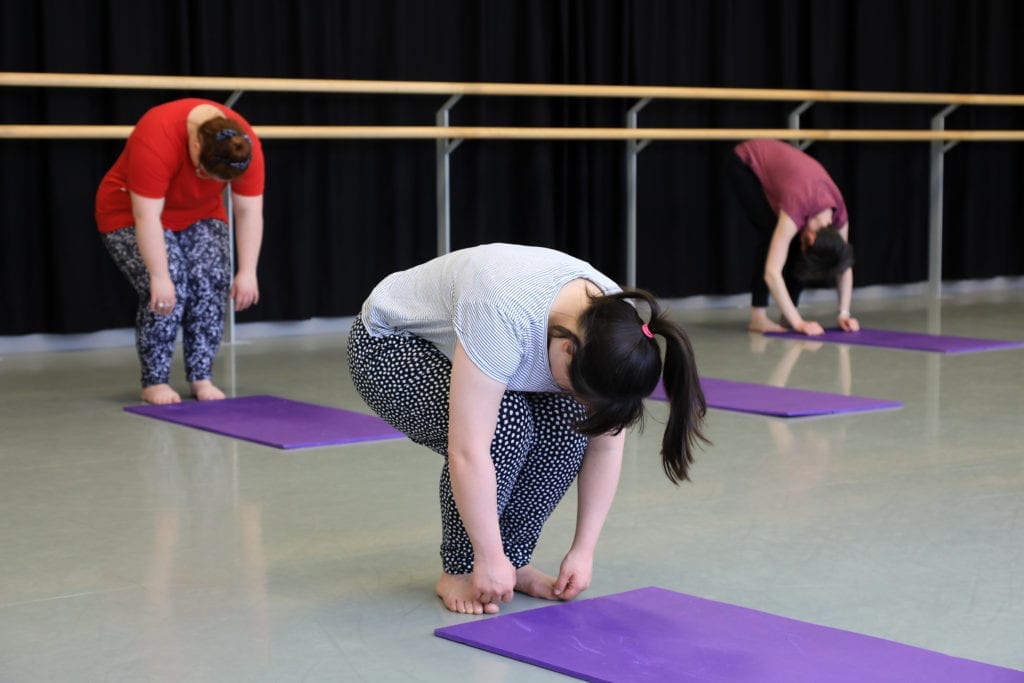It is important that all dancers spend some time cooling down to allow their body to physically recover after class, as well as to solidify any changes that have taken place.
The cool down section of the class can be an opportunity for dancers to develop body awareness through identifying which parts of the body they feel they have worked and recognising any changes to how their body feels at the end of physical activity. This may take some time to develop. One way to achieve this is by guiding the dancers through a verbal “body scan”.
Body scan activity
The dancers find a resting position where they can relax and be still. This may be standing, sitting or lying on the front or back of the body. Resting in different positions each time may help some dancers identify different areas and keep the activity engaging.
Verbally guide the dancers through their body noticing how each area feels. If standing, it can be effective to start at the feet and work upwards through the body to the head. If lying, begin at the head and gradually work down the body to the feet.
The dancers then mark any areas on a template and discuss any changes they have noticed. This can lead well into discussing the difference between muscles being tired or tight, due to being worked and actual pain that is a sign to stop. Dancers may also recognise thirst and hunger, opening a conversation on the need to keep hydrated through drinking water and food as a source of energy.




Cool down plans
Each dancer’s individual needs are often highlighted in the cool down. Through helping each dancer to devise their own individualised cool down plan, autonomy and the need for self care can be encouraged.
One way to implement this may be to:
1. Explore a range of techniques that may suit their needs.
* self massage/muscle tension release – with hands, spiky or rubber ball etc. This will help to relax the muscles, increase circulation, relieve tension and cramps, as well as remove waste products from the muscles.
* dynamic stretching – e.g. slowly curling and uncurling through the spine to release the muscles of the back, neck and shoulders; or lying on your front and alternately folding each foot to the sitting bones, while keeping knees in line, to lengthen the quadricep muscles. This type of stretching will allow the muscles to return to their natural state and maximum natural length, and need to be performed in a slow and controlled manner.
* static stretching – e.g. holding a downward dog position, reaching heels to the floor, or holding a supine twist. These types of stretches should be held for 30-60 seconds as they aim to increase flexibility of the muscles stretched.
Any stretches should be taken only to the point of mild tension as this will not only make the stretches safe, but also more effective.
2. Decide which types of cool down exercises are most suitable for their needs, and draw/write these on their chart.
It may take a few weeks to explore and devise their plans which can be revisited and revised regularly.
For links to further resources on safe practice see our resources.
Hypermobility and stretching
Dancers with hypermobility may need additional support to ensure they are stretching safely and targeting the muscles they have worked, rather than finding the end of their range of movement e.g. sitting in 2nd or “frog” position. Alignment will need checking closely to avoid injury or dislocation.
Safe stretching will help improve body awareness and thereby better control and stability of the end ranges of movement. More information on hypermobility can be found here.
The European Commission support for the production of this publication does not constitute an endorsement of the contents which reflects the views only of the authors, and the Commission cannot be held responsible for any use which may be made of the information contained therein.




